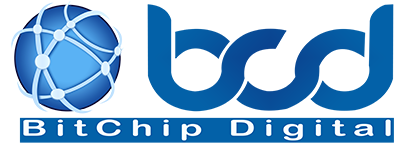
If your SEO to-do list keeps growing while your hours stay the same, you’re not alone. Many marketers are expected to do it all—content, analytics, technical fixes, and outreach—without the time or bandwidth to execute efficiently. That’s where AI steps in. AI isn’t here to replace you—it’s here to clear the clutter so you can focus on what matters.
You don’t need to automate everything. You just need to know more about what you can take off your plate right now. Here’s where AI can start saving you time today.
Keyword Research and Topic Discovery
Manual keyword research can eat up hours. Sorting through search volumes, filtering irrelevant phrases, and comparing keyword difficulty—it’s a slow process. AI-powered tools now handle this in minutes. They identify target keywords based on your content, group them by intent, and even suggest related topics that your audience is already searching for.
More importantly, these tools prioritize based on opportunity, not just popularity. Instead of chasing every high-volume term, you’ll get a focused list of phrases you can realistically rank for. That’s more useful, especially when time is limited.
On-Page SEO Recommendations
Optimizing content after it’s published can feel like guesswork—unless you’re using AI. Smart platforms now scan your page and compare it against top-ranking competitors. They highlight what’s missing, what needs fixing, and what can be improved to match search intent.
These recommendations often include:
- Headline suggestions
- Keyword usage and placement
- Content depth and coverage
- Internal linking opportunities
- Readability and structure improvements
Instead of manually updating a page and waiting weeks to see the impact, AI lets you make informed edits quickly and track performance.
Technical Site Monitoring
Site errors can silently drag down your rankings. But constant audits take time, and it’s easy to overlook small issues. AI tools now automate technical SEO checks, flagging problems like broken links, slow load times, and missing metadata.
The real advantage here isn’t just speed—it’s frequency with the right digital products. These tools monitor your site continuously, so you’re alerted to problems before they impact rankings. That means fewer last-minute scrambles and less time spent tracking down issues.
Content Brief Creation
If your team writes content regularly, you know how long it takes to research each piece. AI tools now generate briefs based on top-ranking content, suggested subtopics, and key questions users are asking.
The result? Writers spend less time researching and outlining and more time actually creating. These briefs often include word count targets, formatting tips, and keyword guidance, all tailored to what’s working in search today.
For solo marketers, this can shave hours off content planning. For teams, it keeps output consistent without bottlenecks.
Outreach Prospecting
Link building is necessary—but finding the right people to reach out to is slow. AI can now help by scanning the web for relevant domains, checking their authority, and identifying the ones that are likely to respond to outreach.
These platforms also suggest personalized messages and track engagement, so you’re not just blasting cold emails. Instead, you’re targeting the right sites with the right message—automatically.
The time saved in prospecting alone makes this one of the most valuable areas to automate, especially for lean teams with aggressive growth goals.
Real-Time Reporting and Alerts
Instead of logging into multiple tools, exporting data, and building custom dashboards, AI SEO platforms now deliver real-time performance updates. These include traffic changes, keyword shifts, backlink growth, and page performance.
Even better, they flag unusual patterns. If a keyword suddenly drops five positions, or a page loses visibility, you’ll know right away. This means you can take action before rankings slip further or traffic declines.
For marketers managing multiple sites or campaigns, this visibility is a huge time saver and risk reducer.
Final Thoughts
You don’t need to automate everything at once, but you do need to start somewhere. The areas above are perfect entry points. They’re repeatable, time-consuming tasks that AI now handles better, faster, and with fewer errors.
When your tools do the heavy lifting, you can finally focus on the work that moves the needle: strategy, testing, creativity, and growth.
The best part? You’ll feel less overwhelmed and more in control. And that’s something every busy marketer could use more of.
